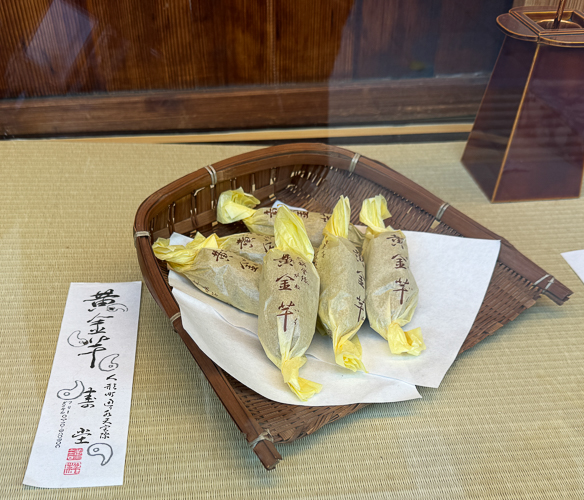December 2023
Ningyocho, Tokyo’s Doll Town
Ningyocho is a neighborhood in the Nihonbashi district in Tokyo’s Chuo ward. Ningyocho (literally “Doll Town”) was licensed by the city as a pleasure district of Japan during the Edo period. The area had puppeteers, dollmakers, and craftsmen necessary to support the industry, as well as Kabuki.
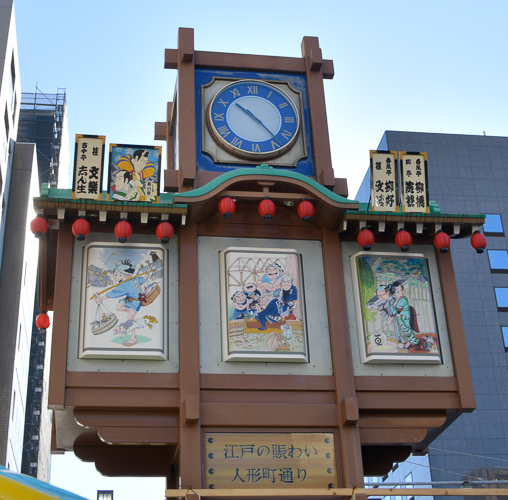
The Clock with Rakugo storytellers
On the main street, Ningyocho-dori, there are two clock towers. One tower features firefighters and the other, rakugo storytellers. On the hour (which I missed twice) they put on a small mechanical puppet show.
The word rakugo literally means ‘fallen words’. It is a type of verbal entertainment in Japan. There is never more than one performer on stage, and that person takes the role of all the characters in the story. The story is always based on dialogue, and the rakugoka (rakugo performer) indicates the change between different characters by a change in pitch, tone, and/or a slight turn of the head.
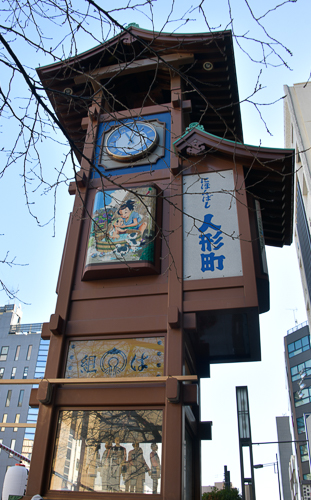
Firefighter Clock
The characters in the Firefighter Clock are not hidden behind a curtain, so I could at least get a look at the puppets.
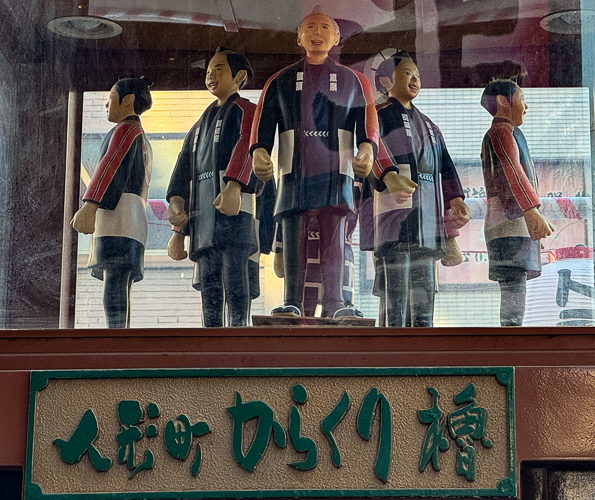
These clock towers were originally called Karakuri Yagura. In the world of performing arts, yagura was an elevated scaffold built over the entrance of a kabuki or bunraku theater, used by drummers to get people’s attention.

Here is a very odd piece of trivia regarding the firefighters. The firefighters (machi-bakeshi) of the Edo Period were divided into 47 groups. They were named for the 47 letters of the Iroha.
The Iroha is a Japanese poem. The first record of its existence dates from 1079. It is famous because it is a perfect pangram, containing each character of the Japanese syllabary exactly once.
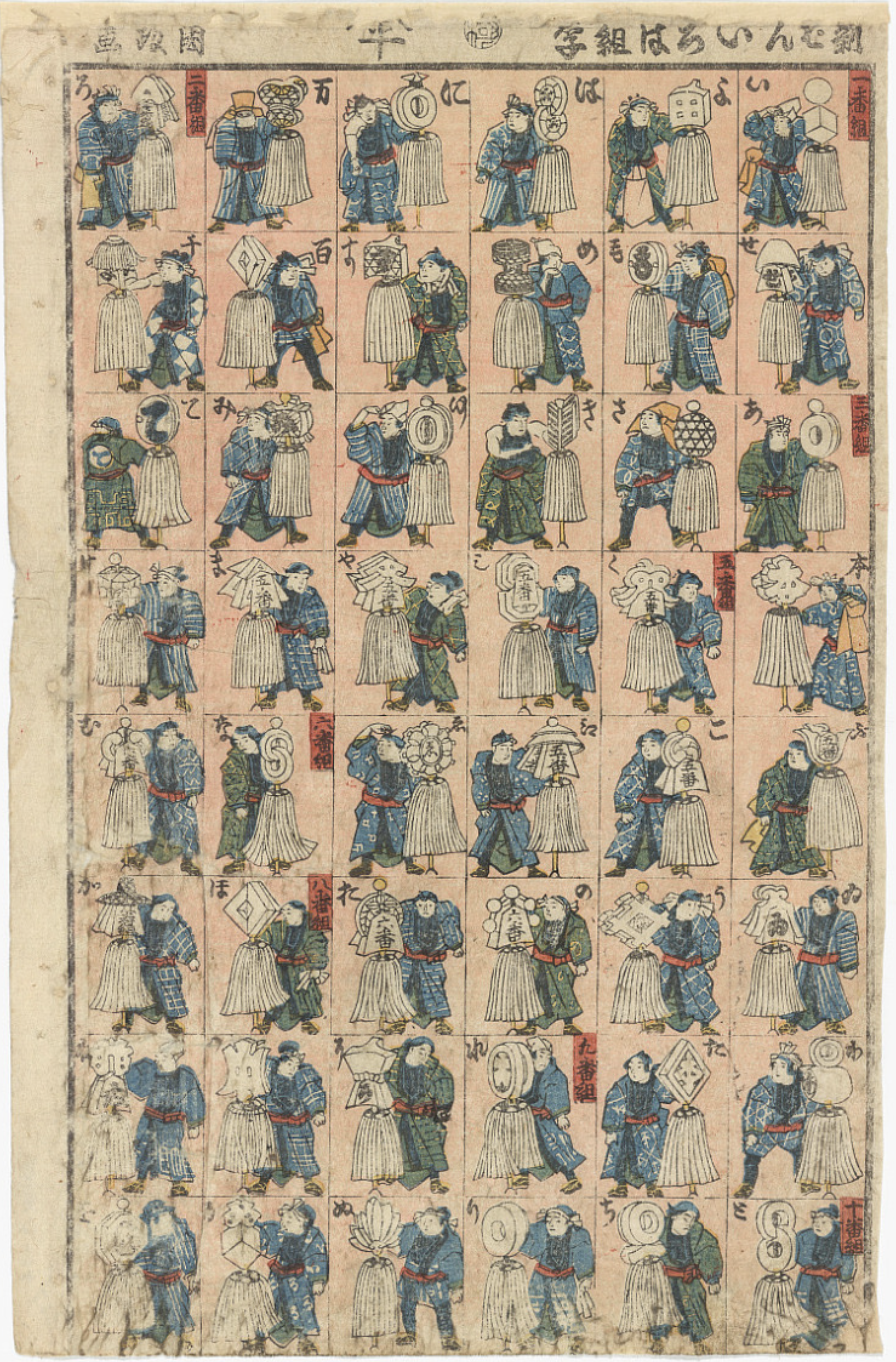
Print of Japanese firefighter brigades, created by Utagawa Kunimasa II.
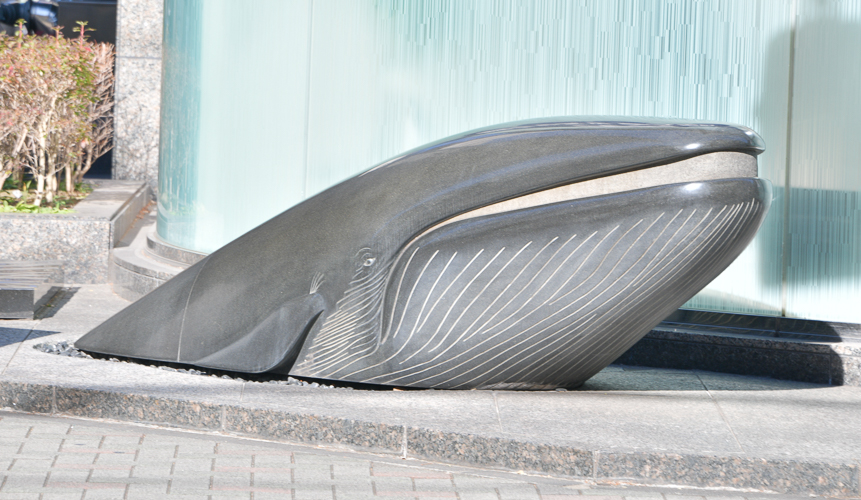
Created by Hiroshi Matsubashi and Hirotsugu Nakata – 2002
So why the whale? In Japan, Bunraku is a performing art where puppets are brought to life and perform subtle emotions throughout the play. This is largely due to the special strings that manipulate them, which are made from baleen. Bunraku has been declared an intangible cultural heritage by UNESCO.
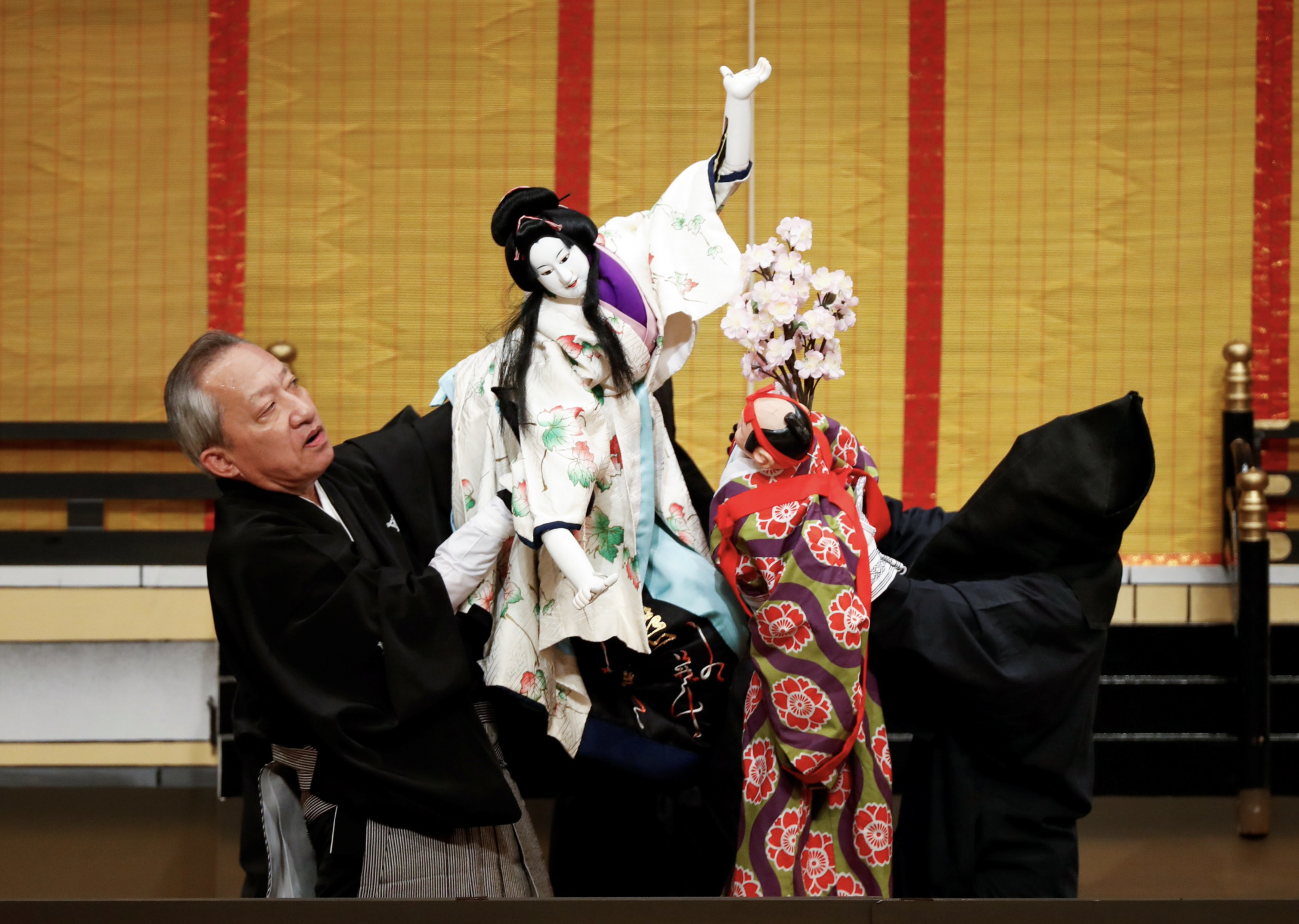
Bunraku – image from Japanclass.jp
In a park in Nihonbashi is this statue of Benkei, which is a character from the Kabuki Play – Kanjincho
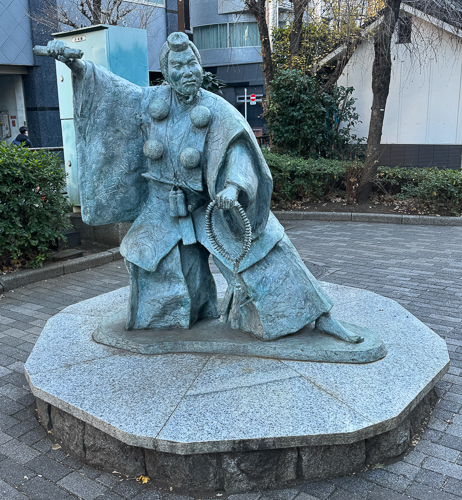
Benkei
This area is fun to wander. It has truly fascinating small alleyways with lots of international cuisines. It also has lots of sweets shops. This is a Golden Potato from Kotobukido. It is a white bean paste-filled cake covered in cinnamon, whose aroma was wafting out into the street and would draw you into the shop even if you weren’t looking for it. 